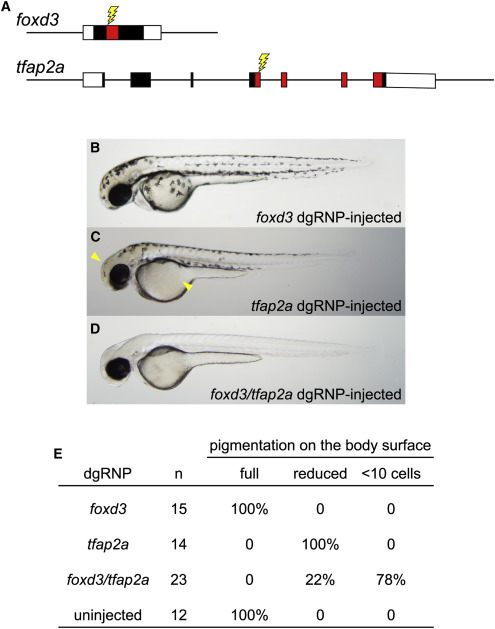Fig. 5 Redundant Gene Functions Can Be Uncovered by Targeting Two Genes Simultaneously with dgRNPs (A) dgRNPs were designed to target sequences (lightning bolts) encoding the DNA binding domains (red-shaded exon sequences) of the transcription factor products of the foxd3 and tfap2a genes. (B–E) Embryos targeted with either foxd3 dgRNPs or tfap2a dgRNPs resemble single mutants: (B) embryos targeted with foxd3 dgRNPs appear morphologically near-normal at 2 dpf, and (C) embryos targeted with tfap2a dgRNPs have moderately reduced pigmentation most notable on the head and yolk (arrowheads). (D) Most doubly injected embryos were devoid of melanophores at 2 dpf, resembling true foxd3;tfap2a double mutants (Arduini et al., 2009). (E) Three-fourths of the doubly injected embryos were devoid of pigment; the remaining embryos had markedly reduced pigmentation, consistent with incomplete loss of function of the targeted genes.
Reprinted from Developmental Cell, 51(5), Hoshijima, K., Jurynec, M.J., Klatt Shaw, D., Jacobi, A.M., Behlke, M.A., Grunwald, D.J., Highly Efficient CRISPR-Cas9-Based Methods for Generating Deletion Mutations and F0 Embryos that Lack Gene Function in Zebrafish, 645-657.e4, Copyright (2019) with permission from Elsevier. Full text @ Dev. Cell

